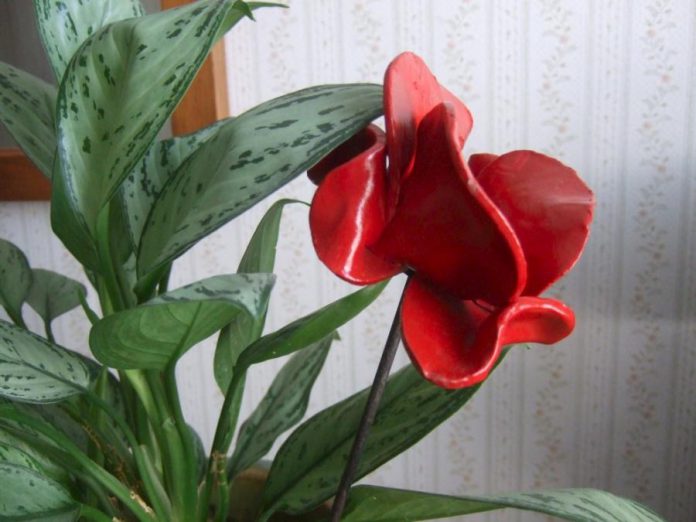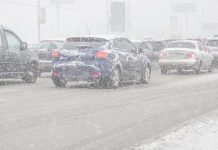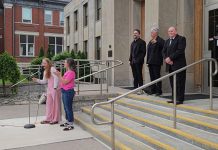
In 2014, on the 100th anniversary of the beginning of World War I, Blood Swept Lands and Seas of Red opened at the Tower of London. Flowing out of the thick Tower walls and filling the moat were 888,246 hand-made, ceramic, blood-red poppies, one for each military fatality from Britain and the Commonwealth. While “The Last Post” rang through the warm evening air, this tide of red as far as one could see was harrowing.
I remember well the first time I heard “The Last Post”. It was 1954, and I was at a Remembrance Day ceremony in our southern Ontario village. I was ten. As a snow-laden wind blew through my thin Brownie uniform, the mournful sound of that bugle burrowed its way past my worries about how long I’d have to stand there in the cold, and planted the first grains of what real loss might mean.
VIDEO: The Last Post
Like big and small communities all across the country, we had a parade every November 11th. People gathered at the bandstand: town officials, band members, and of course veterans. Leading the parade were the flag bearers carrying both the Union Jack and, in those days, the Red Ensign. Then came veterans from the army, navy, and air force all in uniform — some very young, some my father’s age, and some, to me, very old. All men.
Following the veterans were the band, the officials, and then we Brownies and Guides, Cubs and Scouts. Some veterans were able to march in formation, but some could only struggle along on canes or leaning on another’s steady arm. I remember how they held their heads high, their chests proud with medals.
It was a short distance to the cenotaph, a simple concrete column about 10 feet tall, with the names of local men who had died in World War I on one side and World War II on another. I walked by that cenotaph four times a day every day for seven years, but I paid it little attention except on those November days when I was ten, eleven and twelve. I didn’t know that the word cenotaph meant an empty tomb, but I knew it was different from the cemetery gravestones where the bodies lay deep in the cold earth below. I knew that the dead remembered here lay in battlefields and cemeteries and ocean depths very far away.

Many townspeople stood waiting in a straggling half-circle, all in dark clothes, the men in fedoras, the women in plain hats. The ceremony began with “Oh God, Our Help in Ages Past”. Then the minister read from the Bible and thanked God for helping us be victorious over evil, and for giving us the men and women who had suffered to defend our country-both those who returned and those who had made “the ultimate sacrifice.” The names of each of the dead were read aloud.
Then came the recitation of “In Flanders Fields” which everyone, young and old, knew by heart as we’d all memorized it in school. I wish I’d known then that it was a very famous poem read in ceremonies like this all across the country, and I wish I had known it had been written by a Canadian doctor, Lieutenant Col. John McCrae, who came from a town only 30 miles away.
Then the wreaths — modest little circles of felt poppies on wire stands — were laid by families, members of the Legion, the village council, and the IODE.
There was always one lone woman among them, a mother, guided forward on the arm of a serviceman, carrying a small wreath and walking as if to her doom. Everyone stood very still while she placed her wreath, and then touched it one last time.
Just before the 11th hour of the 11th day of the 11th month, the heart-breaking bugle began “The Last Post”, and many eyes, including mine, would fill with tears. The sense of sadness and loss was overwhelming. After the two minutes of silence, the bugler played “Reveille”, and the band played “God Save the Queen”, and then it was over.
I remember little clusters of women huddled together afterwards — the widows, the mothers, the sisters — propping each other up under the heavy sky like all those images of women at gravesides. Some were crying, and some were looking off into the distance, far, far away.
I knew so little. I didn’t know Canadians had fought for four long years during the First War, and five more in the Second. I didn’t know that in the First, almost one tenth of Canada’s population of only eight million enlisted, and over 66,000 didn’t return. I didn’t know that almost three times this number were wounded, many forever broken, physically and emotionally.
I didn’t understand that trench warfare meant that men lived in muddy trenches for weeks on end, and I didn’t know that the mud in the battlefields wasn’t like the mud down near the river, but a kind that could swallow men and horses whole. I didn’t know about the hunger and the cold and the fatigue and the terror and the barbed wire and the craters and the rats and the lice and the snipers and the deafening, relentless noise and the awful smell of cordite, rotting carcasses, and poison gas.
I didn’t know that every day men saw friends blown up and others terribly disfigured, and I didn’t know about shell-shock and how it broke both soldiers and medics, rendering people mad, sometimes forever after. I didn’t know that in the First War, deserters, often just shell-shocked boys, could be shot at dawn by their own men, right there on the battlefield.
Even though this village of ours had been settled by German immigrants and many people there still spoke German, our teachers and parents made it clear who had been the bad guys and who the good. I was too young to understand how conflicted some people must have felt knowing their sons might have been fighting their own cousins on the battlefields, but I never heard it mentioned.
What we heard about were the losses: the millions of soldiers and civilians who’d died “so we could be free”; however, numbers like these are unfathomable for anyone, let alone for children. I also don’t remember being frightened by their tales, so they must have kept us from the terrible reality that in wars great harm doesn’t merely fall on soldiers.
What the adults really wanted us to see was that these wars had touched everyone, and the losses were still felt in homes and hearts in every single community across the land. They wanted us to understand about sacrifice, to understand what so many people gave for us, and to understand that this enormous debt could never be repaid.
The flat, artificial poppies we wore then were the same size and shape as the ones still sold every November, although then they were flatter and made of duller red felt. I’d never seen a poppy in real life, and I had no idea why poppies were the flowers chosen to make us remember.
I didn’t know they are deeply associated with battlefields, that they grow easily on disturbed soil, and after land battles in the Napoleonic wars, people described those battlefields the next spring blooming with blood-red poppies. I didn’t know that these wild poppies in places like Flanders were often the only plants still growing “between the crosses, row on row.”
I decided to take the option of buying one of those Tower of London poppies to be delivered when the display was taken down. Although they weren’t designated, I do wonder whose poppy I got. I know I’m being both fanciful and self-important to think I have any connection at all to this person who gave his or her life so long ago, but still I wonder what they, the dead, would have thought of this lovely, red poppy that was made as an act of remembrance, and now sits in the warmth and sunny comfort of our upstairs hall.
Originally published as “The Cenotaph” in Maple Tree Literary Supplement (August 2016)


























